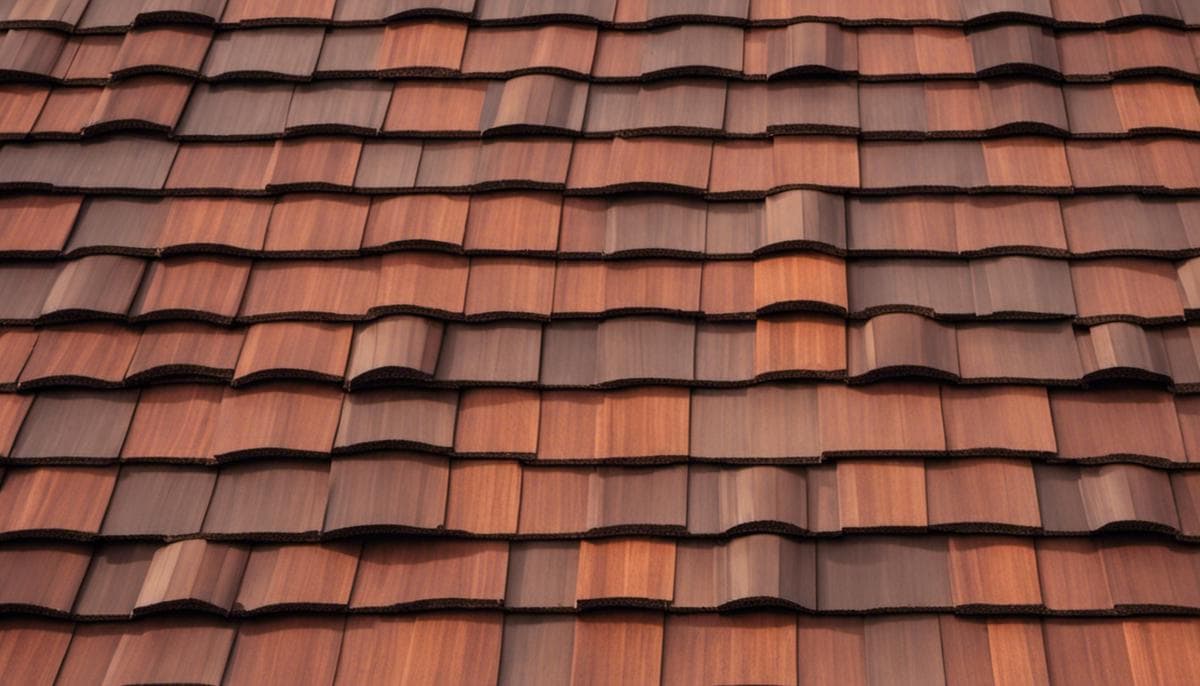
21 Sep Mastering Roof Repair in Owasso: A Guided Approach
Whether you’re a homeowner or a consummate DIY enthusiast in Owasso, understanding the fundamentals of roof repair is critical to the maintenance and longevity of your home. Knowing the various roofing types and materials used in the area, like asphalt shingles, wood shingles, metal roofs, and more becomes the first step in nurturing this important competency. Coupled with this foundational knowledge is learning to aptly assess any roof damage such as leaks, broken shingles, and rot, as well as being able to repair these issues using a variety of methods. Beyond this, it’s equally crucial to comprehend the safety precautions that are key to one’s wellbeing and being informed of the local Owasso permit regulations which govern any such repairs. In the course of this discussion, we aim to provide a comprehensive guide that touches on these essentials of roof repair in Owasso.
Understanding Roof Types and Materials
Asphalt Shingles: A Popular Roofing Choice in Owasso
In Owasso, Oklahoma, asphalt shingles are a common choice for roofing materials due to their cost-effectiveness and ease of installation. These shingles are made of either organic paper fibre mat or fiberglass, saturated in asphalt and coated with mineral granules. Given their composite nature, it is important to detect problems like shingle erosion, blistering, curling, or buckling early for effective repairs.
Wood Shingles: The Classic Roofing Material
Another commonly used roofing material in Owasso is wood shingles. These are made from split logs and provide a distinct aesthetic appeal to any home. Depending on the type of wood used, these roofs can be very durable, but it’s essential to monitor for signs of rot, warping, or damage from insects. It’s important to address these issues promptly to avoid serious structural damage.
Metal Roofs: The Long-Lasting Option
Although slightly more expensive than other materials, metal roofs are a popular option in Owasso due to their long lifespan and durability. These roofs can be made from a variety of metals including steel, aluminum, copper, and alloy strips. Metal roofs can resist the most severe weather conditions but are still prone to rust and corrosion. Regular maintenance and immediate repair of scratches or punctures can maximize the longevity of a metal roof.
Tile Roofs: The High-End Roofing Material
Despite their higher initial costs, tile roofs – whether made from clay, concrete, or slate – are favored among some Owasso residents for their superior durability and resistance to fire and rot. These materials require less maintenance than others but can break or fade over time. Immediate replacement of any broken or faded tiles is necessary in order to prevent leaks or structural damage.
Know Your Roof Material to Choose the Correct Repair Method
Understanding the roofing material used on your home is an important first step in any repair project. Each material requires specific methods and materials for repair, ranging from the use of roofing cement for asphalt shingles to replacing entire tiles on a tile roof. Before beginning any repair project, it’s recommended to consult with a local roofing expert or professional who can provide advice tailored to your specific roofing material.
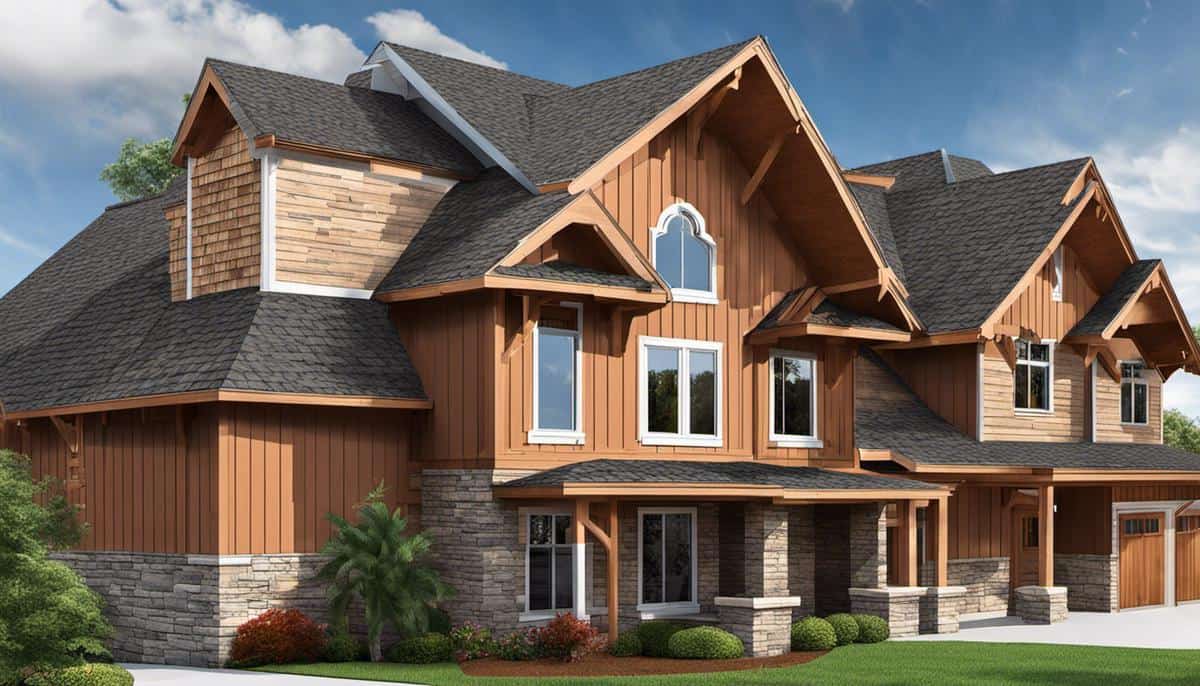
Assessing Roof Damage
Understanding the Importance of Roof Inspection
Regular roof inspections are vital to maintain the longevity and efficiency of your roof. A variety of factors, such as weather, temperature fluctuations, and normal wear-and-tear can cause damages to your roof. Regular inspections can help catch these issues early, possibly preventing expensive repairs or replacements. Moreover, it helps to ensure the safety of your household or employees.
Learning to Inspect Your Roof
Begin the inspection by looking at the most common areas where damage occurs – the shingles, the flashing around vents and chimneys, and the areas around skylights. You need to check for missing, cracked, curled, or blistered shingles. These are signs of aging and exposure to the elements, and if not addressed, could cause leaks and more significant damage over time.
Flashing is another essential area to inspect. Poorly installed or damaged flashing is a primary source of leaks on a roof. Ensure that they are intact and lying flat against the surface. If there is rust, separation, or lifting of the flashing, repairs would be warranted.
Identifying Signs of Potential Damage
The signs of potential roof damage can be subtle and hard to spot if you don’t know what to look for. Some common indicators are areas of moss, rust spots on the flashing, black algae stains, and sagging on the roof deck. Additionally, check for debris and blocked gutters, which can prevent water runoff and cause water to back up, creating further damage.
Inside your home, look for signs of water damage, such as paint peeling off or brown spots on your ceilings – these are clear signs of a leaky roof. A sudden increase in energy costs can also be a sign that your roof ventilation may not be functioning correctly due to damage or wear.
Recognizing Roof Rot
Roof rot, though less common, is a severe issue that needs immediate attention. An indication of roof rot would be sagging areas, soft spots to the touch, or visible growth of moss and fungi on the roof. Rot basically means the wooden elements of your roof have begun to deteriorate, which can lead to serious issues like structural damage or collapse if not addressed quickly.
Conclusion
Once you’ve learned to identify common defects and problems, regular roof inspections will become less daunting. Keep a checklist of the things you need to inspect and use it as a guide during each inspection. Remember, any significant damage or changes should be addressed by a professional to ensure thoroughness and safety. Regular inspections will keep your roof in top condition, extending its life and performance.
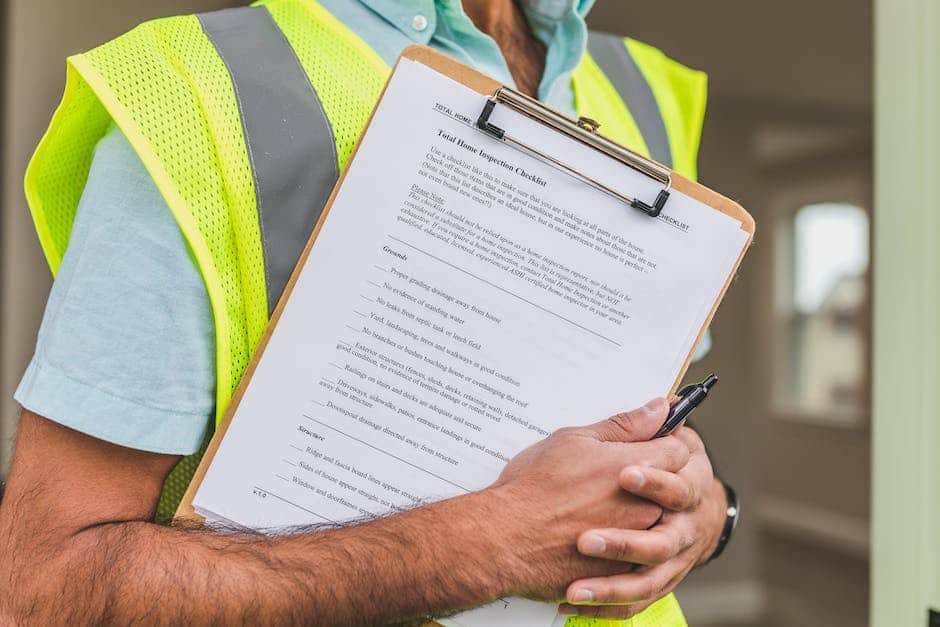
Roof Repair Techniques
Identifying Roof Issues
The first step in roof repair is to identify the problem areas. Look for signs of wear and tear such as missing, cracked, or curled shingles; leaks in the ceiling; wet spots along the fireplace; or peeling of paint under roof overhangs. Rotting wood or dampness in your attic, along with mold or unpleasant smells, might also signal a roof issue.
Patch Leaks
Once a leak is identified, it’s essential to act quickly to prevent further damage. Start by finding the exact spot of the leak in the roof. It can be identified by dark spots or mold in your attic. Roof leaks usually occur around chimneys, vents, plumbing, and windows. You can patch or seal these leaks using a roofing sealant. Ensure the surface is thoroughly clean and dry before applying the sealant.
Replace Shingles
Replacing a roof shingle is a common remedy for minor roof damage. You’ll need to safely remove the defective shingle first. Using a pry bar, remove the nails holding the damaged shingle. Lift the above layer of shingles, slide out the damaged piece, and slide in a new shingle. Nail it in place, ensuring the nails are covered by the upper level of shingles, to maintain the continuity of the roof.
Addressing Rot
Spotting and addressing rot is a crucial part of roof maintenance. When a roof is exposed to chronic moisture, the wooden parts start to rot, compromising the strength of the roof structure. If you spot any signs of rot, hire a professional roofer to evaluate the extent of the damage and provide remedial solutions. If just a small portion is affected, it can be cut out and replaced with new wood and fresh shingles.
Performing Regular Inspections and Maintenance
To prevent roof damage or to catch issues early when they are easier to fix, regular roof inspections are recommended. You should inspect your roof at least twice a year, preferably in the fall and spring. Look for signs of damage such as broken, loose, or missing shingles, excessive granules in the gutter, and signs of moisture or water damage in the attic. Also, keep your roof clean by removing any debris and checking for signs of algae, mold, or rust.
In case of major roof damage, always consult with a professional roofing company. Proper roof repair not only keeps your house safe but also increases its lifespan and value.
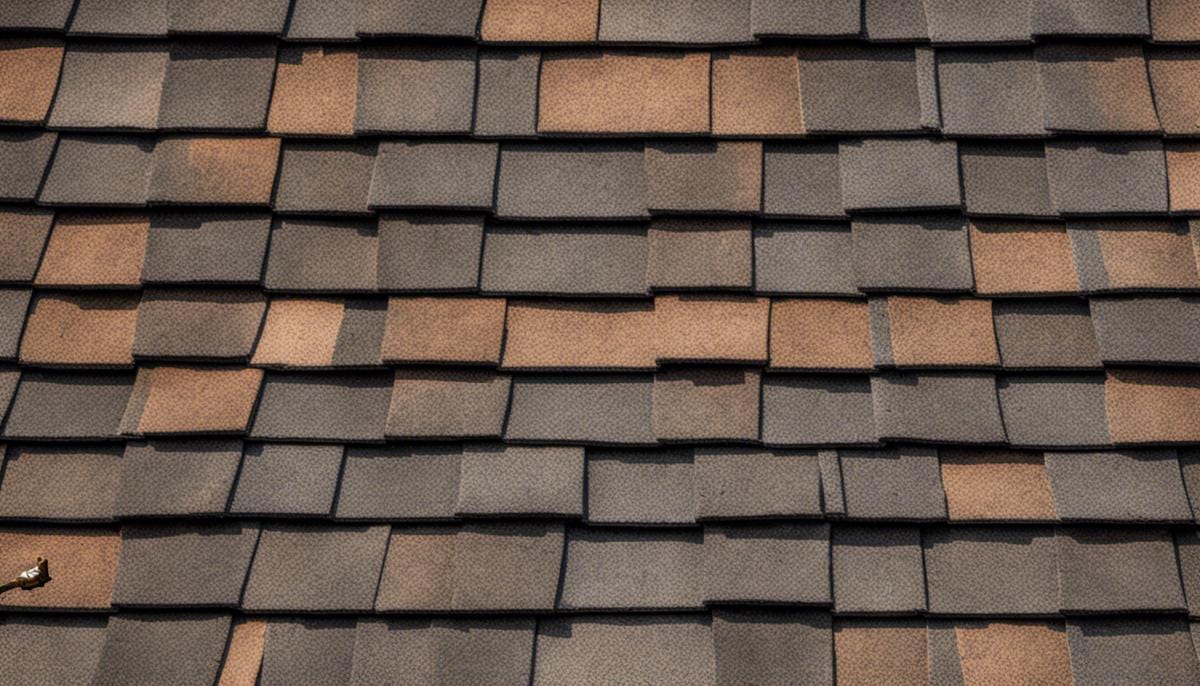
Safety Precautions and Permit Regulations
Understanding Roof Repair Safety
Roof repair or replacement can be a dangerous job due to the heights involved and the potentially slippery conditions. To ensure safety, you should use a sturdy ladder, preferably one with a stabilizer bar. Always make sure the ladder is on solid, level grounding before climbing. Use a tool belt to keep both hands free for climbing and balance. Always try to work with a buddy system, if someone falls or gets injured, there’s someone ready to offer immediate help.
Roofers’ boots or shoes with good traction are important to prevent slipping. Use safety ropes and a harness whenever possible, especially for steep roofs. Be aware of the location of power lines to avoid electrocution hazards.
Never work on the roof in adverse weather conditions such as rain, high winds or lightning. It’s worth considering a professional inspection first. They can identify serious issues a layman might miss.
Risk Management for Roof Repair
Managing risks during roof repair involves identifying potential hazards and taking proper precautions. Keep the work area clean and free of tools and debris to prevent slips, trips, and falls. Protect those on the ground by setting up barriers and cordons.
Ensure that everyone involved in the project is trained in safety procedures, including the proper use of tools, equipment, and personal protective equipment.
Regular inspections should be conducted on the working conditions and any equipment used. In addition, maintain good communication among your team members about potential risks.
Owasso Permit Regulations for Roof Repairs
Before starting a roof repair project in Owasso, it’s important to understand the local permit regulations. In Owasso, a building permit is required for roof repairs if the project involves structural alterations. For projects that only involve replacing shingles or tiles, you usually will not need a permit.
To get a permit, you’ll need to submit a permit application to the City of Owasso’s Building Safety Department. This application will include details about the project such as the location, description of the work, and estimated cost. You may also need to provide a plan of the project.
It’s worth keeping in mind that unauthorized work can result in penalties or fines. Always ensure that the work you’re planning is permitted before you start. By adhering to guidelines and local codes, you are ensuring the safety and longevity of the project.
Remember, knowing how to do a job is important, but knowing how to do it safely and legally is crucial. Your preparation can prevent accidents, reduce risks, and ensure your project complies with local regulations.
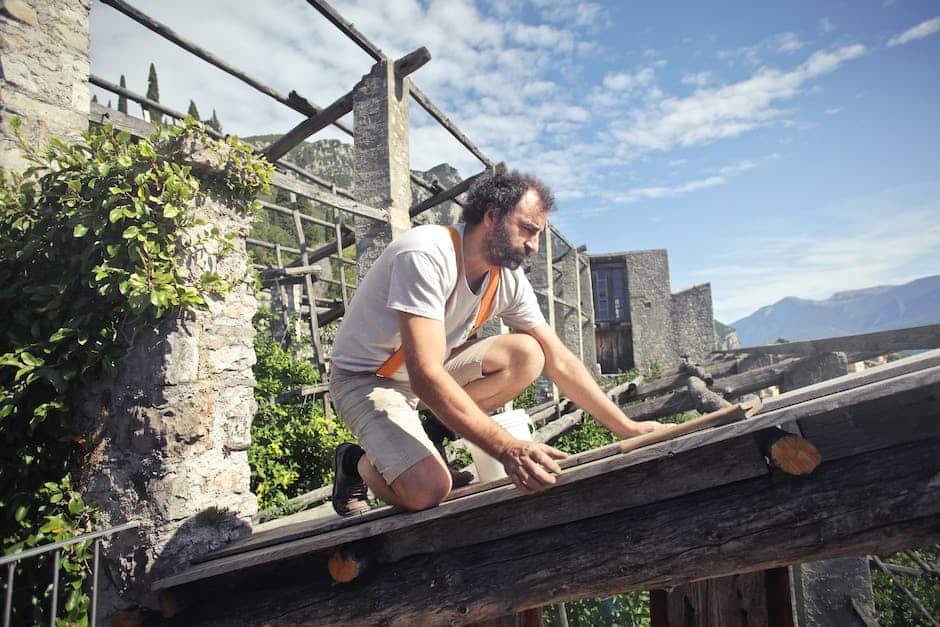
Safeguarding the efficacy and lifespan of your home doesn’t simply stop with understanding roofing materials and identifying damages. It is equally valuable to delve into a diverse set of repair techniques, each tailored to the unique needs and conditions of your roof. From patching leaks, replacing shingles, to addressing rot, these methods will arm you with the practical skills needed to rectify any roofing conundrum. Beyond the realm of skills and techniques, safety measures and guidelines also become paramount in mitigating risk and ensuring the welfare during the repair process. Lastly, being abreast of the local Owasso permit regulations ensures legality and compliance in all your roofing endeavors. By mastering these various aspects of roof repair, not only do you bolster the integrity of your home but you also cultivate a significant skill set that is both rewarding and practical for every homeowner in Owasso.


Sorry, the comment form is closed at this time.